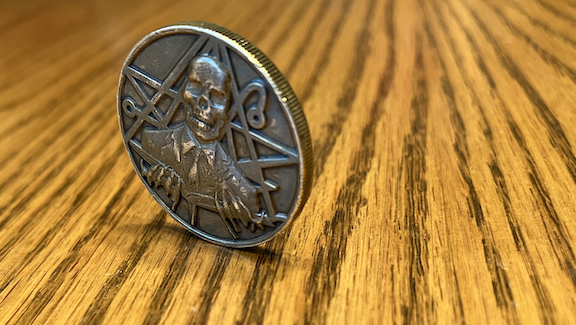The Terror of the Last Resort
“What should I do?”
This is far and away the most frequent question I get when people find out what I do for a living, and what they really mean is, “What technique should I use?” My answer is always disappointing, because techniques are as useless as buying a gun and not training with it, as useless as never thinking about when you might pull it, what that might mean, and how best to prevent ever having to pull it in the first place.
So what should you do? The answer sounds simple, but it isn’t easy: You have to identify your risk factors, avoid the avoidable, and train a last resort.
In order to understand the motivation for even bothering with the first two, you need to understand the truth of a “last resort”—without sugarcoating, bravado, or ego. The terror of the last resort lies not so much in arriving at that awful moment (that dolly-zoom pinch-point where you realize your survival hinges on what you do next) but in arriving there entirely empty-handed—and empty-headed. Terror is finding yourself in the place where circumstance demands action and realizing you have nothing.
Lethal motivation does not lead to good decision-making. You’ll be stuck with however you prepared, with whatever you laid in ahead of time. Did you ever stop to consider the unthinkable? Take the time to walk yourself through the paces of the action you’d like to take in that crucial moment? Or did you bet your life on the sheer improbability of being targeted? “Chances are it won’t happen to me.” On ego? “I can take care of myself—I’ll figure it out when I’m there.” Or comforting lies? “Having a gun is better than any training.” The bottom line is if you haven’t trained a last resort, you don’t have one.
But even that’s not enough. Just buying a gun and learning how to shoot people dead does nothing to prevent the necessity of doing so in the first place—the only thing you can reliably do with it is kill people. (Brandishing to change someone’s mind is inherently risky and unreliable—if it works it was a lucky day, and nothing more.) Having a last resort is only as good as your training to employ it—and your training to avoid it.
When you understand that violence is a straight-up 50/50 shot—a coin-flip where somebody will get it right first, and win—then it becomes obvious that you want to toss that coin as rarely as possible, and really only when you have no other choice. Having a last resort means exactly that—it’s the end of a list of options, the one that is arrived at reluctantly because of the finality of it; you can’t call back bullets or raise the dead.
Identify Risk Factors
What behaviors do you engage in that make it more likely you’ll be involved in violence? Do you like to drive aggressively, tell people off in public, use the ATM after dark? How about running alone in isolated areas while your attention is compromised by headphones or earbuds? Think hard about the things you do that could expose you to unnecessary risk—even things you believe you should be allowed to do—and change your behavior accordingly. Whenever I realize I’m about to do something risky I pull that imaginary coin out of my pocket and think about having to flip it—and then I put it back and find another way.
Avoid the Avoidable
This is really about developing strategies for de-escalation and disengagement, figuring out—ahead of time—how to talk someone down or just walk away. If you’ve lived long enough you’ve no doubt done your fair share of both. The issue, always, is ego—it’s the fuel on the fire of heated words, it’s the hook that pulls you back in. Ego cannot be disarmed once things get rolling; safing it is something that takes time, effort and careful consideration long beforehand. It’s not weakness to talk or walk, it is the epitome of self-control. Strength is not just the ability to physically destroy another person, but also the ability to hold ego in check and successfully navigate potentially dangerous antisocial situations. It is an unfortunately rare but laudable thing. Think hard about it ahead of time, give yourself permission to do it, be okay with it before you even get there—because it is not an easy thing.
Really applying yourself to mitigating your risk factors and avoiding what you can takes care of 99.9% of the trouble lying in wait for you out there. With the first one you’ll never know how much you dodged (a Good Thing) and the second ends up as stories you can be proud of (“He was a jerk, but nothing worth going to jail for.”).
That leaves you with the final 0.1%—the stuff you can’t prevent or get away from. The stuff that only responds to action in kind. The stuff that will otherwise kill you. This is what the last resort is for, and why you must train one.
Train a Last Resort
Action creates opportunity. Action alters outcomes. Doing something is better than doing nothing. Doing the right thing is better than doing the wrong thing. Whatever it is that you end up training as your last resort it needs to be about hurting people so they can’t continue. It needs to produce results that you know in your bones you can replicate, without worrying about looking good or making allowances for social niceties. Whether it’s about shooting them dead or choking them out doesn’t matter—it’s about having something you’ve thought through, trained and laid in like clockwork, ready to be sprung when you find yourself at the end of all things.
Ultimately, everything packed inside “identify risk factors, avoid the avoidable and train a last resort” is a lot more complicated than “just kick him in the groin”—but it’s my honest answer to “What should I do?” It’s not about a throwaway magic trick or the brief pondering of a too-short news item. It’s about altering the very fabric of your life in order to preserve it. And then knowing what to do when all else fails.
— Chris Ranck-Buhr



Leave a Reply
Want to join the discussion?Feel free to contribute!